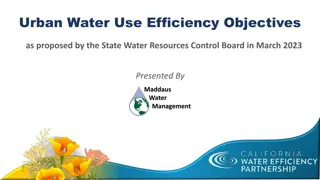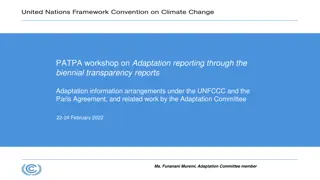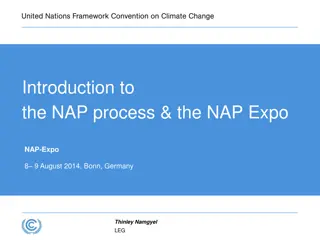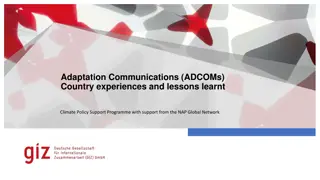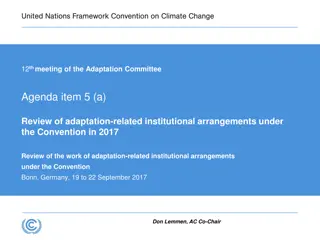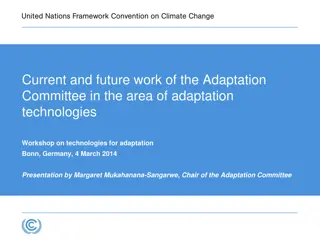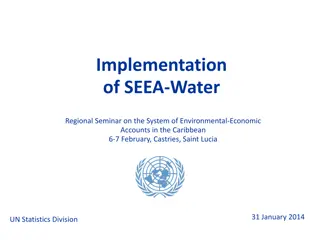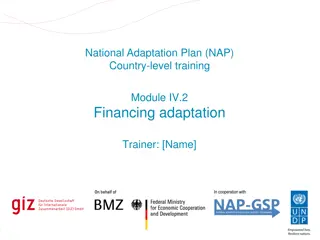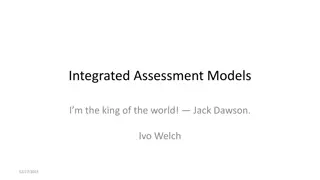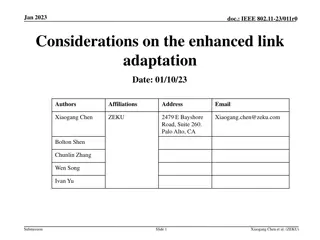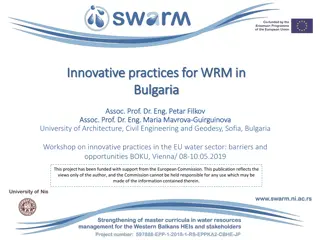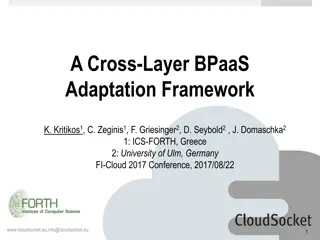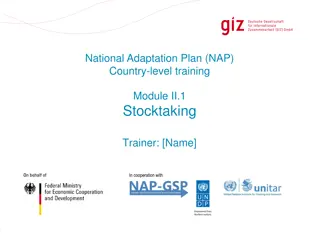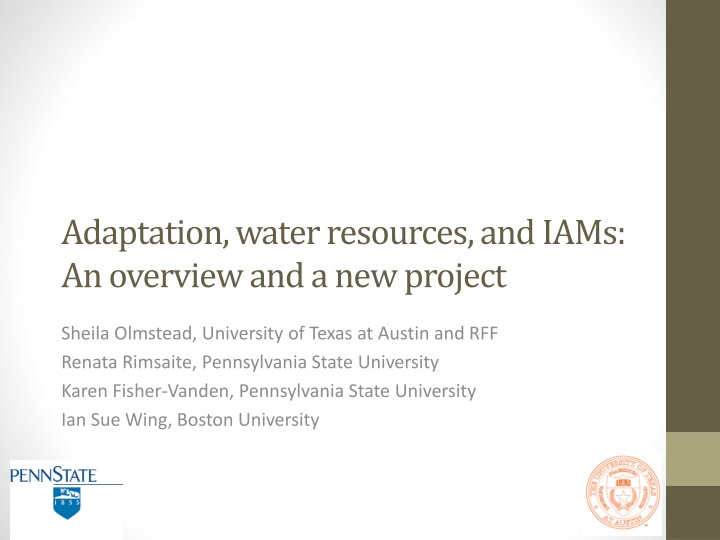
Adaptation, Water Resources, and IAMs: An Overview
Water resource impacts of climate change have far-reaching effects on various sectors like health, agriculture, urban development, and more. This overview discusses the importance of adapting water resource management institutions and the institutional constraints on adaptation for incorporation into IAMs, highlighting key institutions like water pricing, administrative tariff schedules, and water markets. The evidence of institutional constraints reveals significant disparities in water allocation pricing across different sectors. Markets are recognized as adaptive institutions in managing water resource challenges.
Download Presentation

Please find below an Image/Link to download the presentation.
The content on the website is provided AS IS for your information and personal use only. It may not be sold, licensed, or shared on other websites without obtaining consent from the author. If you encounter any issues during the download, it is possible that the publisher has removed the file from their server.
You are allowed to download the files provided on this website for personal or commercial use, subject to the condition that they are used lawfully. All files are the property of their respective owners.
The content on the website is provided AS IS for your information and personal use only. It may not be sold, licensed, or shared on other websites without obtaining consent from the author.
E N D
Presentation Transcript
Adaptation, water resources, and IAMs: An overview and a new project Sheila Olmstead, University of Texas at Austin and RFF Renata Rimsaite, Pennsylvania State University Karen Fisher-Vanden, Pennsylvania State University Ian Sue Wing, Boston University ?
Adaptation and water resources Water resource impacts of climate change will affect health, agriculture, urban and industrial use, transport, energy supply and demand, non-market ecosystem services, fisheries, forestry, recreation Published estimates of regional and national economic impacts assume: (a) no adaptation; or (b) perfect adaptation. Neither scenario is likely correct, given what we know about existing water resource management institutions. Research need: model, quantify institutional constraints on adaptation to water impacts, for incorporation into IAMs. ?
Important institutions to model Water pricing institutions Administrative tariff schedules Water markets (our first project focuses here) Direct allocation regimes Legal water rights structures Transboundary treaties Water infrastructure investments Dams, reservoirs, flood control Pollution control institutions These institutions in current forms constrain efficient allocation, which should be considered in IAMs. And institutions, themselves, may adapt (or maladapt ) to change. ?
Evidence of institutional constraints ? Source: Walton, Brett. 2010. The price of water: A comparison of water rates, usage in 30 U.S. cities. 26 April. www.circleofblue.org.
Evidence of institutional constraints, cont. Stark contrast between real-world water allocation and optimal allocation, in a static setting. Relative prices in the U.S. West provide an example: San Diego: $225/acre-foot (af) vs. Central Valley farmers: $15-16/af. AZ farmers (Pima County): $27/af vs. City of Tucson: $479-$3,267/af. (Brewer et al. 2008) Rio Grande Valley (TX) value of water in agriculture: $300-$2,300/af, vs. urban uses: $6,500-$21,000/af. (Griffin and Boadu 1992) ?
Markets are adaptive institutions Brewer J., Glennon R., Ker A., Libecap G. 2008. Water markets in the West: Prices, trading, and contractual forms. Economic Inquiry. 46:91-112. ? 6
New project on water markets and adaptation Estimate water demand curves by sector in the western U.S. Estimate historic welfare gains from trading (1987-2010), where trading has been allowed. Examine how U.S. water markets evolved between 1987-2010, and in the cross-section (do they vary with degree of aridity?). Develop scenarios for different market structures to simulate Some less constrained Some more constrained? Which of these are more likely to occur, based on 1987-2010 and cross-sectional variation? What are the welfare implications? ?
Connection to IAMs Above work emphasizes the need to build institutions into IAMs since water is not allocated efficiently Important to capture these inefficiencies in order to more accurately measure implications of climate change on water use and adaptation responses. Can include water resources in IAM (with help from WBM) but will need to distinguish between different end-users (e.g., ag and urban) who face very different demand functions for water. Will use empirical work from above to parameterize this component of the model. ?
Prior research on water markets Brookshire et al. (2004) estimate demands for water in AZ, CO, and NM (1990-2001)via 2SLS: 1) Price = f(State, Buyer, PDSI, Pop. Change, PerCap Income) 2) Quantity = f(Price, Value of Ag. Activity, Land price) Their results suggest that: All markets are becoming more efficient Water is moving from lower-valued to higher-valued uses Government pays lower prices, but also has smaller share of the trades First steps of our analysis are similar to their approach We seek to estimate water demands We can check their future predictions, because we have more data This information will be applied in welfare gains analysis ?
A first look at the data for our study Available water rights data - Water Strategist 12 states; 1987-2010; Price; Quantity; Seller; Buyer Figure: Average Price by state by sector (1987-2010) 400 350 300 250 P(ag-to-ag) Price 200 P(ag-to-urb) P(urb-to-urb) 150 100 50 0 AZ CA CO ID MT NM NV OR TX UT WA WY In all states except ID ag-to-urb transactions are more expensive than ag-to-ag transactions In CO, MT, NM, NV, and TX ag-to-urb transactions are more expensive than urb-to- urb transactions ?



